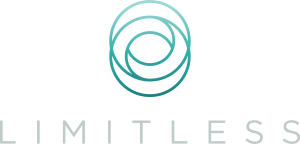Somewhere along the way, with the best of intentions to serve better and grow faster, we become human doings swimming in a sea of to-do lists, pursuing the next productivity hack, desperately grasping to the idea that our task lists have a bottom.
We have built our identities and our businesses on what we do, not who we want to be. We become human doings instead of human beings. In this doing state, there is always a task list taunting you, a plan to be perfected, a project to be completed, a call to be returned, and just one more corner that must be turned. And so we become unwitting accomplices in the demise of our own happiness and well-being.
Today, the competing demands of working from home, managing client expectations and markets, plus the added demand of parenting and teaching for many, is leading many into a state of overwhelm, of feeling suffocated by the complexity and competing demands that come with these utterly unexpected and beyond uncertain times.
This environment sends our brain into a stress state, kicking in our survival instincts, releasing stress chemicals adrenalin, noradrenalin and cortisol. From this fight-or-flight state, we respond instinctively with the singular goal of survival.
No solutions can be found from this stress state. Your pre-frontal cortex, the cognitive, creative, problem-solving, solution-finding part of your brain is shut down because the blood flow is more needed in the heart and muscles, all the better to fight harder and flee faster to deal with the immediate threat. In a stress state, you are forced to deal with the near-term threats to your survival, shutting down your desperately needed strategic perspective.
If you recognize this in your own life, your next objective isn’t to complete the task list. It’s to learn how to co-exist with it in a way that leaves you feeling empowered not endangered.
I was coaching an advisor last week who had taken two weeks off to care for her ill mother. Upon return, she was overwhelmed by her workload and severely stressed. I asked her to take three deep breaths and tell me what feeling was behind her mental chatter. “Disappointment,” she said. “I can’t get it all done without killing myself, and I’m exhausted. But I can’t let anyone down.”
As I like to do in such cases, we took a two-pronged approach: right now and rear-view. Right now is what immediate strategy can we use to improve the situation. Rear-view is finding the big picture issue we need to solve to make sure the overwhelm stays in the rear-view mirror.
The near-term solution was that she segment her open client service needs into three buckets: those that needed immediate attention in the next week or two, those that could be addressed in the weeks and months following, and those that could just be added to the next client review agenda.
Next, an email communication was drafted, one for each of the three timeframes. It explained her personal situation and how she would be addressing their service issue with the messaging personalized by the bucketed time frame. Communicating honestly with clients and bringing expectations into the realm of reality brought her instant relief.
Then I helped her created a structured service model to systematize the factory work so that she and her team could focus on the work that delivers real value to clients. From there, she committed to implementing client meeting surges–grouping client meetings into set times of the year, typically once in the spring and once in the fall for 6-8 week periods. You can download my free meeting surge training here to get the in-practice insights on how to make surges work for you.
The result? After she shifted out of a stress state into a success state, the advisor was able to take the small but seismic step to move her focus from what she had to do to who she wanted to be. She wanted to run a practice that delivered massive value to clients, with integrity and authenticity, while feeling good about her work and the role it played in her life. She wanted to serve, not suffer.
Shifting from stress state to success state is a behavior habit you build, bringing greater awareness and control over your headspace with practice. It starts with something as simple as a few deep breaths to clear your mental chatter, a five-minute walk outside, your favorite sporting activity, or any other practice that brings the headspace for you to separate yourself from the stress you feel.






